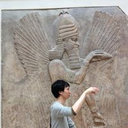Signalling pathways for cardiac hypertrophy.
کلید واژه ها
خلاصه
Mechanical stretch is an initial factor for cardiac hypertrophy in response to haemodynamic overload (high blood pressure). Stretch of cardiomyocytes activates second messengers such as phosphatidylinositol, protein kinase C, Raf-1 kinase and extracellular signal-regulated protein kinases (ERKs), which are involved in increased protein synthesis. The cardiac renin-angiotensin system is linked to the formation of pressure-overload hypertrophy. Angiotensin II increases the growth of cardiomyocytes by an autocrine mechanism. Angiotensin II-evoked signal transduction pathways differ among cell types. In cardiac fibroblasts, angiotensin II activates ERKs through a pathway including the Gbetagamma subunit of Gi protein, Src family tyrosine kinases, Shc, Grb2 and Ras, whereas Gq and protein kinase C are important in cardiac myocytes. In addition, mechanical stretch enhances the endothelin-1 release from the cardiomyocytes. Further, the Na+ -H+ exchanger mediates mechanical stretch-induced Raf-1 kinase and ERK activation followed by increased protein synthesis in cardiomyocytes. Not only mechanical stress, but also neurohumoral factors induce cardiac hypertrophy. The activation of protein kinase cascades by norepinephrine is induced by protein kinase A through beta-adrenoceptors as well as by protein kinase C through alpha-adrenoceptors.


